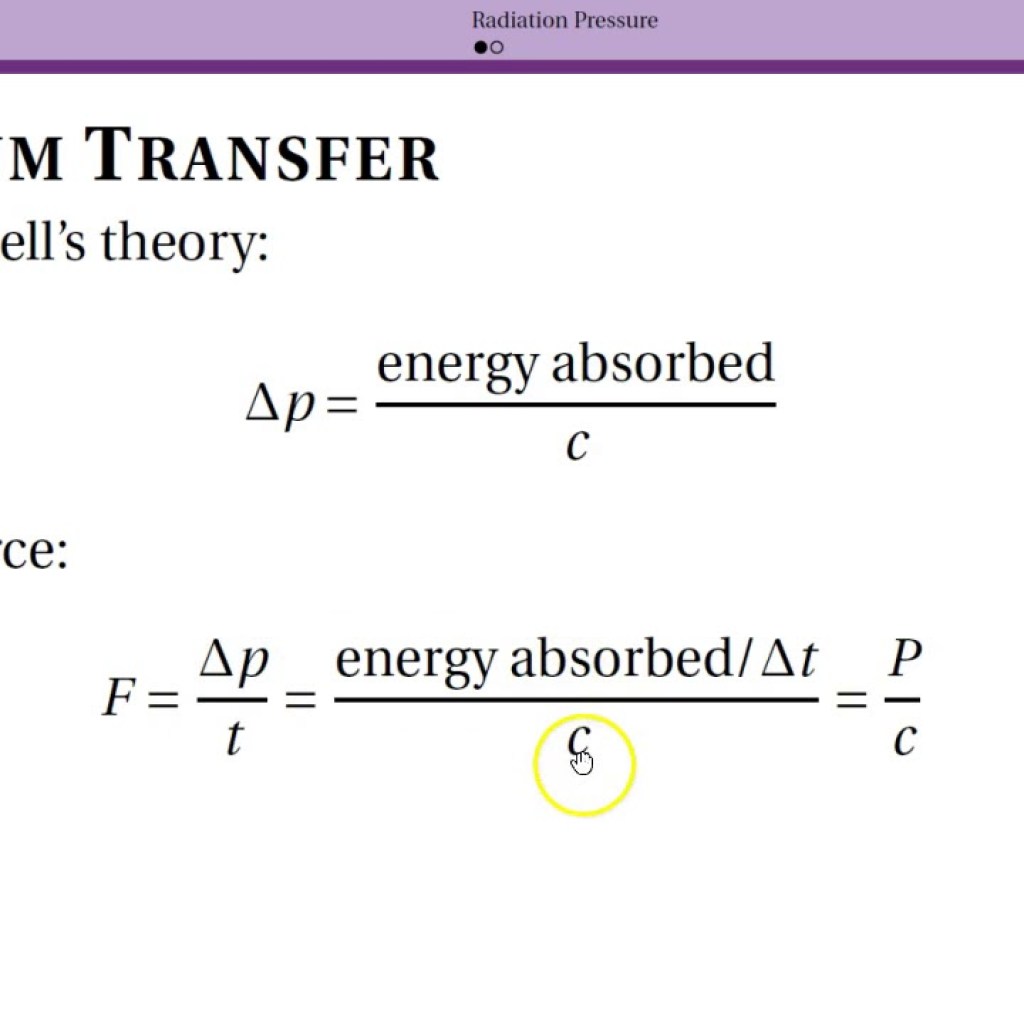Contents

Source: YouTube
Exploring the Phenomenon of Radiation Pressure
Radiation pressure is a fascinating concept that involves the transfer of momentum from light to a surface, resulting in a mechanical force. This force arises when light is reflected, absorbed, or emitted by a material. Although typically weak, radiation pressure plays a crucial role in various scientific and engineering applications.
The Basics of Radiation Pressure
Momentum Transfer and Force
When light interacts with a surface, it exerts pressure due to the transfer of momentum. This pressure is defined as the force per unit area, and it is directly related to the optical intensity. The concept was first introduced by Johannes Kepler and later expanded upon by James Clerk Maxwell, who developed the mathematical framework to describe light forces. In 1900, Pyotr Lebedev experimentally confirmed the existence of radiation pressure.
Reflection and Absorption
Consider the simplest scenario where light is normally incident on a perfectly reflecting mirror. In this case, the direction of each photon is reversed, transferring twice the momentum of each photon to the mirror. For non-normal incidence, the force is reduced by a factor dependent on the angle of incidence. When light is fully absorbed, the radiative force is reduced since the photons are not reflected back.
Applications of Radiation Pressure
Solar Sails and Space Propulsion
One of the most intriguing applications of radiation pressure is in the development of solar sails for spacecraft propulsion. These sails harness the pressure of sunlight to generate thrust, allowing for long-duration space travel without the need for fuel. Although the forces are small, they can significantly alter the momentum of a spacecraft over time.
Laser Cooling
In the realm of atomic physics, radiation pressure is utilized in laser cooling techniques. By applying carefully tuned laser beams, scientists can reduce the kinetic energy of atoms, effectively cooling them to near absolute zero temperatures. This has significant implications for quantum computing and fundamental physics research.
Beam-Powered Propulsion
Another proposed application is beam-powered propulsion, where high-power lasers provide thrust to spacecraft. Although this method requires substantial energy, it offers the potential for efficient travel over vast distances, as the momentum per kilogram of fuel can be much higher than traditional rocket propulsion.
Challenges and Limitations
Measuring Radiation Pressure
Despite its potential, measuring radiation pressure is challenging due to the small forces involved. For instance, a 1000 W laser beam reflecting normally generates a force of only about 3.3 μN. Advanced technologies, such as microelectromechanical systems (MEMS), are employed to detect these minute forces.
Radiation Pressure Noise
The presence of quantum noise in optical fields leads to fluctuations in radiation pressure, which can interfere with precision measurements. In gravitational wave detection, for example, radiation pressure noise can increase the noise floor, complicating the detection of these elusive waves.
Conclusion
Radiation pressure, though a subtle effect, has significant implications in various scientific and technological fields. From propelling spacecraft to cooling atoms, its applications are diverse and promising. As technology advances, our ability to harness and measure this force will continue to grow, opening new frontiers in exploration and innovation.

Source: YouTube
Feel free to comment your thoughts.



